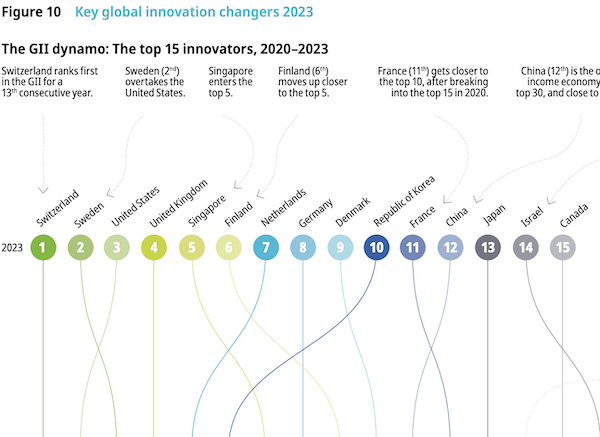USPTO Issues Guidance on Patentability of Inventions Developed with the Assistance of Artificial Intelligence | Weintraub Tobin
On February 12, 2024, the United States Patent and Trademark Office (“USPTO”) issued guidance on the patentability of inventions developed with the assistance of artificial intelligence, saying that a human must have made a “significant contribution” to the invention. The USPTO explained that while AI-assisted inventions are not categorically unpatentable, the inventorship analysis should focus on human contributions, as patents function to incentivize and reward human ingenuity. Thus, patent protection may be sought for inventions for which a natural person provided a significant contribution to the invention, and the guidance provides procedures for determining the same.
In the guidance, the USPTO explained that while AI systems and other non-natural persons cannot be listed as inventors on patent applications or patents, the use of an AI system by a natural person does not necessarily preclude a natural person from qualifying as an inventor if the natural person “significantly contributed to the claimed invention.” Therefore, patent applications and patents for AI-assisted inventions must name the natural person who significantly contributed to the invention as the inventor or joint inventors. Additionally, applications and patents must not list any entity that is not a natural person as an inventor or joint inventor, even if an AI system may have been instrumental in the creation of the claimed invention.
The USPTO reasoned that the US Supreme Court has indicated that the meaning of “invention” in the Patent Act refers to the inventor’s conception. Similarly, the Federal Circuit has made clear that conception is the touchstone of inventorship. Conception is often referred to as a mental act or the mental part of invention. Specifically, “[i]t is ‘the formation in the mind of the inventor, of a definite and permanent idea of the complete and operative invention, as it is hereafter to be applied in practice.’” Because conception is an act performed in the mind, it has to date been understood as only performed by natural persons. Thus, courts have been unwilling to extend conception to non-natural persons. Hence, when a natural person invents using an AI system, the conception analysis should focus on the natural person.
But, the USPTO also reasoned that there are no sections of the Patent Act that support a position that inventions that are created by natural person using specific tools, including AI systems, result in improper inventorship or are otherwise unpatentable. The statutes only require the naming of the natural persons who invented or discovered the claimed invention, irrespective of the contributions provided by an AI system or any other advanced system. Accordingly, the inability to list an AI system used to create an invention as a joint inventor does not render the invention unpatentable due to improper inventorship.
However, in the context of AI-assisted inventions, natural persons who create an invention using an AI system or any other advanced system must still contribute significantly to the invention. There is no requirement for a named inventor to contribute to every claim in an application or patent; a contribution to a single claim is sufficient. However, each claim must have been invented by at least one named inventor. In other words, a natural person must have significantly contributed to each claim in a patent application or patent. In the event of a single person using an AI system to create an invention, that single person must make a significant contribution to every claim in the patent or patent application. Inventorship is improper in any patent or patent application that includes a claim in which at least one natural person did not significantly contribute to the claimed invention, even if the application or patent includes other claims invented by at least one natural person.
The USPTO then provided the following non-exhaustive list of principles that can help determine whether an AI-assisted invention is patentable:
1. A natural person’s use of an AI system in creating an AI-assisted invention does not negate the person’s contributions as an inventor. The natural person can be listed as the inventor or joint inventor if the natural person contributes significantly to the AI-assisted invention.
2. Merely recognizing a problem or having a general goal or research plan to pursue does not rise to the level of conception. A natural person who only presents a problem to an AI system may not be a proper inventor or joint inventor of an invention identified from the output of the AI system. However, a significant contribution could be shown by the way the person constructs the prompt in view of a specific problem to elicit a particular solution from the AI system.
3. Reducing an invention to practice alone is not a significant contribution that rises to the level of inventorship. Therefore, a natural person who merely recognizes and appreciates the output of an AI system as an invention, particularly when the properties and utility of the output are apparent to those of ordinary skill, is not necessarily an inventor. However, a person who takes the output of an AI system and makes a significant contribution to the output to create an invention may be a proper inventor. Alternatively, in certain situations, a person who conducts a successful experiment using the AI system’s output could demonstrate that the person provided a significant contribution to the invention even if that person is unable to establish conception until the invention has been reduced to practice.
4. A natural person who develops an essential building block from which the claimed invention is derived may be considered to have provided a significant contribution to the conception of the claimed invention even though the person was not present for or a participant in each activity that led to the conception of the claimed invention. In some situations, the natural person(s) who designs, builds, or trains an AI system in view of a specific problem to elicit a particular solution could be an inventor, where the designing, building, or training of the AI system is a significant contribution to the invention created with the AI system.
5. Maintaining “intellectual domination” over an AI system does not, on its own, make a person an inventor of any inventions created through the use of the AI system. Therefore, a person simply owning or overseeing an AI system that is used in the creation of an invention, without providing a significant contribution to the conception of the invention, does not make that person an inventor.
Finally, the USPTO reminded applications that they still have a duty to disclose, and in applications for AI-assisted inventions, this information could include evidence that demonstrates a named inventor did not significantly contribute to the invention because the person’s purported contribution was made by an AI system.





.jpg)
